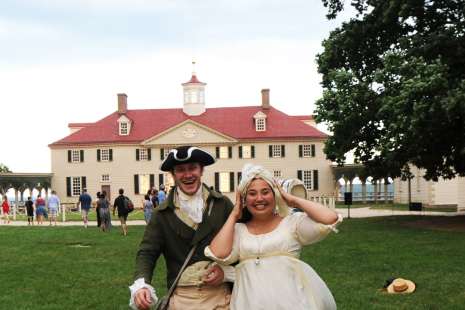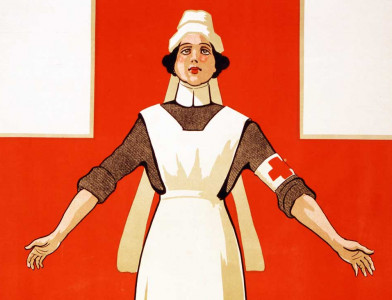World History Teaching Ideas Include Smartphone Apps
World history teaching ideas include using smartphone apps. Apps can make learning social studies concepts fun for children and teens. Students can learn world history at his or her own pace with updated news and information. History apps can be accessed remotely. Students who miss classroom lessons can catch up at home by using the Internet to download information to an Android phone. Students can learn history at his or her pace.
Carl Sagan once said, “You have to know the past to understand the present.” World history teaching ideas include the use of free cutting-edge digital software. Great history teachers know that the use of this software can make history lessons interesting and exciting. Students can engage with the past through historical scenes. They can talk to pasts presidents or kings and visit other historical time periods.
Matthew Farber is an associate professor of educational technology at the University of Northern Colorado. He said that the best digital tools are “the ones that support student engagement as the make rich and meaningful connections to people from the past.”
World History Teaching Ideas Innovative Solutions
Using augmented reality (AR) apps on a smartphone presents a unique twist to student learning. World history teachers can use virtual field trips to encourage student involvement in the classroom and engage student learning. Smartphones can be used to present real world historical scenes to students.
These interactive, 3D experiences make teaching history, a boring subject to students, more interesting for them. These immersive experiences help students remember important facts, events and dates. Students can visit historical sites that are too far, expensive or dangerous to visit in person. Unlike traditional field trips, students can often return to virtual field trips to understand and learn world history.
World history teachers should consider using virtual exploration tools such as Google Expeditions and 360 Cities in their daily lesson plans. Teachers should research and select trips that support each lesson. Before the day's lesson, teachers should ensure that all devices are charged and apps are installed beforehand. In class, teachers should introduce the location and provide background instruction before each virtual visit. World history students should be encouraged to explore, ask questions and discuss the virtual trip. After the virtual trip, teachers should ask students to complete assignments based on the virtual experience. These projects or activities could be completed in class or assigned as homework.
Recreating events in history and exploring science adventures are some world history teaching ideas. Other creative applications include learning about other cultures around the world. Google Earth is a way to tour world history from above. This app uses 3D terrain and satellite imagery of the world. World history teachers can compare current Google Earth images with from the past.
Implementing Interactive Polls and Quizzes
World history teachers will receive feedback from their students on how well they are understanding the historical material presented to them. World history teaching ideas should include using polls and quizzes that students can access on their smartphones. These tools provide instant feedback on student learning and encourage participation in classroom lessons.
Students will discover that taking polls and quizzes with a smartphone are fun and challenging activities. Teachers will receive instant feedback and will be able to determine the students that need help in class. Automated grading frees up time to help these struggling students.
Teachers can include these world history teaching ideas in their daily lesson plans in a variety of ways. Introduce students to the new technology with polls. Maintain student interest with a variety of questions. Allow students to create their own quizzes and polls. Quick polls will provide instant feedback that will help with daily lesson plans and assignments. Students will look forward to these fun assessments and adopt them in their daily study routines.
Other World History Teaching Ideas Include Podcasts
Some history teachers encourage students to produce their own podcasts. Maureen Yoder gave an International Society for Technology in Education presentation about this. She suggested small groups of students write podcast scripts to chat with famous historical figures. Students can interview historical figures such as Albert Einstein, Rosa Parks, Isaac Newton, George Washington and Harriet Tubman. The group members decide what these figures would say in response to their questions. They will base their questions on the information they have studied in their world history classes. Students can record the lines in character or input the script into text-to-speech software. Groups can edit the podcasts using free audio editing software like Audacity.
Students can tell stories, conduct interviews and produce audio podcasts. Technology helps students improve communication skills. They work on world history topics that are interesting to them. World history teaching ideas should include using podcasts in their daily lesson plan assignments.
Podcasts help students to become active listeners. They develop public speaking skills that help them gain confidence in sharing their ideas orally with others. Podcasts help students understand world history teaching ideas.
Students can practice articulating ideas. Creating podcast content helps them develop research and critical thinking skills. Students will have fun telling stories and creating new content ideas. Students will also master audio recording, editing and publishing skills.
World History Teaching Ideas and Digital Storytelling
Multimedia narratives bring stories to life through the use of images, sounds and animation. This educational tool gives students a new way of expressing their ideas about history events, places and people.
Students will learn new ways to express ideas and emotions by telling stories. They will become accustomed to working with multimedia tools and platforms. Students will practice clear and engaging narrative techniques to working in teams to create various narratives. They will learn to plan, organize and structure stories. A final benefit is that they will be able to explore and convey complex emotions through the stories they create.
World history teachers should start with story boarding to teach digital creation. In class, teachers should review key storytelling elements. These include plot, character, setting and other elements of telling a good story. Teachers can brainstorm with their students on how different media can enhance the story. Teachers should explain copyright, attribution and the responsible use of media. Feedback sessions can be added to daily lesson plans to refine and improve stories. Student work can be displayed in a digital gallery or festival.
Students can choose their own adventures by creating interactive stories with branching narratives. Teachers should break projects into manageable stages with clear deadlines. Lesson plans should include tutorials and allow time for tool exploration.
World history teaching ideas include this example of a smartphone application.










